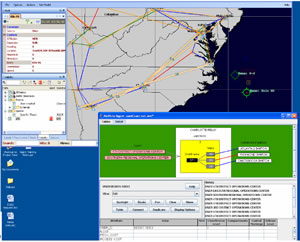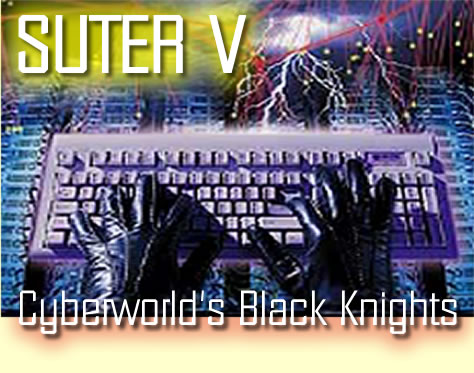From its inception sometime in the late 1990s, Project Suter provides centralized facility to integrate Global Electronic Attack Effects as part of a global operations plan. The project became the first initiative delivered to meet the specific mission requirements of the new Air Force Cyber Command. Suter is designed to deny the adversary’s freedom of action within their own networks.
Currently under development, Suter V integrates electronic attacks via electromagnetic spectrum and the network domain (penetration or hacking, and various types of offensive, denial, confusion or deception attacks). USAF Cyberspace command is implementing those network attack capabilities within a global and theater effects scope of capabilities, employing cyber warfare specialist teams in “cyber-cells’ attached to theater commands. Each team includes offensive ‘hackers’, defensive network systems security analysts and intelligence collection planners. The team also consults and conducts defensive activities protecting space assets, while seeking vulnerabilities and denying enemy use of this ‘high ground’.
Suter provides a coherent and timely view of cyberspace at the tactical level. The service centrally manages and controls the analysis and attack of threat networks, to identify exploitable vulnerabilities susceptible to available network warfare techniques. Targeting complete networks or identifying and monitoring specific network components, the service can evaluate and confirm the effects of kinetic and non-kinetic attacks on critical elements, for example, simulate or assess how the destruction of a specific node can affect the whole network, or open vulnerabilities for further penetration. The team employs various modeling techniques to characterize the mode and status of target networks dynamically and validate the desired effect before such measures are taken.
Suter also controls electronic and network attack assets when pursuing mobile, time critical networked threats, as part of synchronized kinetic, non-kinetic attack and intelligence, surveillance and recce (ISR) operations.
Other topics covered in this series:
-
Cyberworld’s Black Knights – Suter V Project Emerges from the Black
- Who’s in Control?
- F-22 Enters the Network – Linking IFDL, TTNT, Link 16
- Navy Tests new Global Command Architecture

















